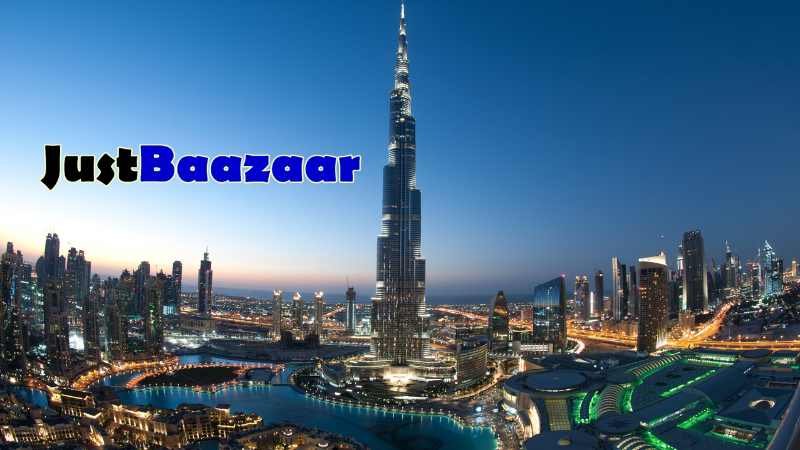Explore Dubai: Matka, Currency, Time, Tourism, Hotels & Attractions

CHAPTER 1 – Dubai Matka: The Historical Journey of Dubai’s Currency
Introduction:
In the vast desert landscape of the Arabian Peninsula, where ancient trade routes intertwined and cultures converged, a unique concept emerged that would shape Dubai’s history – the “Matka.” The Matka, a traditional clay pot used to store and exchange goods, played a pivotal role in the evolution of currency in this vibrant city. This chapter aims to explore the significance of Matka in Dubai’s historical journey and shed light on how its currency has transformed over time.
Evolution of Currency:
Dubai’s currency journey began with barter systems, where goods such as precious pearls and spices were exchanged for other commodities. As trade flourished, currencies like Indian Rupees and Maria Theresa Thalers became widely accepted. However, it was the introduction of the Gulf Rupee by India that laid the foundation for a standardized monetary system in Dubai. With its link to British India currency, Dubai witnessed stability and growth within its financial landscape.
Historical Events Shaping Currency:
As history unfolded, significant events left an indelible mark on Dubai’s currency. The discovery of oil reserves in the 1960s propelled economic growth, leading to increased investments and international trade. This newfound wealth prompted Dubai to establish its own currency – the United Arab Emirates Dirham (AED) – in 1973 when UAE was formed. The AED became an emblem of independence and marked a turning point for Dubai as it transitioned into a global financial hub.
Dubai’s Economic Growth & Global Influence:
Dubai’s currency has become synonymous with economic prosperity and global influence. Its strength is reflected not only in its stability against major international currencies but also through its resilient economy that diversifies beyond oil into sectors such as real estate, tourism, finance, and logistics. The rise of iconic skyscrapers like Burj Khalifa stands as a testament to this growth, as Dubai’s currency continues to be a driving force behind its architectural marvels.
Role of International Currencies:
While the AED is the official currency, Dubai also embraces international currencies. The city’s diverse population and thriving international trade have made it a global melting pot for various currencies. From US Dollars to Euros, these currencies play a vital role in facilitating transactions and investments from around the world. Furthermore, Dubai’s strategic location as a gateway between East and West has fostered an environment where multiple currencies coexist harmoniously.
Future Prospects & Challenges:
Looking ahead, Dubai faces both opportunities and challenges concerning its currency. With initiatives like Expo 2020 on the horizon, the city aims to attract more visitors and stimulate economic growth further. However, maintaining stability amid global economic uncertainties remains crucial. Additionally, as digitalization revolutionizes financial systems worldwide, Dubai must adapt to evolving technologies while ensuring secure and efficient payment solutions.
In conclusion:
Dubai’s currency is not just a medium of exchange; it represents the city’s rich history and remarkable transformation into a global powerhouse. From humble beginnings rooted in traditional barter systems to embracing modern-day financial practices, Dubai has shown resilience and adaptability throughout its journey. As we delve deeper into this book’s chapters that explore various facets of Dubai’s dynamic landscape – from timekeeping to tourism – we will witness how its currency intertwines with every aspect of life in this extraordinary city.
Introduction:
Dubai, with its strategic geographical location, has emerged as a global time hub. This chapter explores the historical background and technological advancements that have shaped Dubai’s prominence in the world of timekeeping. From ancient methods to cutting-edge technology, Dubai has become a center for accurate time synchronization.
Historical Background:
The significance of timekeeping can be traced back to Dubai’s early days as a trading hub. Sailors relied on the position of stars and sun to navigate their ships, making precise timekeeping crucial for their success. Over time, as trade flourished and technology advanced, Dubai embraced modern chronology systems.
Technological Advancements:
Dubai’s pursuit of accurate time synchronization led to remarkable technological advancements. The introduction of atomic clocks revolutionized precision in timekeeping. These highly precise clocks use vibrations within atoms to measure intervals with extraordinary accuracy.
Globalization and Standardizing Time:
The globalization process necessitated standardizing time across different regions worldwide. In 1972, the Coordinated Universal Time (UTC) was established as an international timescale based on atomic clocks. To ensure seamless coordination with UTC, Dubai adopted Greenwich Mean Time (GMT) +4 as its local standard time.
Importance in Various Sectors:
Accurate timekeeping plays a vital role in various sectors within Dubai’s economy. In finance, synchronized timestamps are essential for conducting financial transactions globally. The aviation industry relies on precise timing for flight schedules and air traffic control operations. Telecommunications networks require accurate synchronization for seamless connectivity across different regions.
Future Trends in Timekeeping Technologies:
As technology continues to evolve rapidly, new trends are emerging in the field of timekeeping that will impact businesses operating in Dubai. One such trend is Network Time Protocol (NTP), which allows devices connected to computer networks to synchronize their clocks accurately.
Additionally, advancements like Precision Time Protocol (PTP) enable sub-microsecond synchronization, making it possible for critical infrastructure systems to operate with impeccable precision. These technologies will further enhance Dubai’s position as a global time hub.
Implications for Businesses:
Accurate timekeeping offers numerous benefits for businesses in Dubai. It ensures efficient coordination between global offices and facilitates real-time data analysis. By adhering to precise time standards, businesses can avoid discrepancies and errors in their operations.
Moreover, accurate time synchronization is crucial for industries that rely on automation and artificial intelligence. From smart factories to autonomous vehicles, these technologies require precise timing for seamless operation.
Conclusion:
Dubai’s journey as a global time hub has been marked by historical significance and technological advancements. The city’s commitment to accurate timekeeping has positioned it as a leader in this field. As technology continues to advance, Dubai will continue to play a pivotal role in shaping the future of global time synchronization.
The next chapter will delve into the fascinating world of Dubai tourism, exploring why millions flock to experience its wonders each year and highlighting its popular attractions and unique cultural experiences.
Introduction:
Dubai, known as the “City of Gold,” has become a global tourism hotspot, attracting millions of visitors each year. In this chapter, we will delve into the various reasons why Dubai has become such a popular destination and explore its unique attractions that captivate travelers from around the world.
Overview of Popular Tourist Attractions:
Dubai boasts several iconic landmarks that have become synonymous with the city’s cosmopolitan image. The Burj Khalifa, standing tall at 828 meters, is not only the tallest building in the world but also a symbol of Dubai’s ambition and grandeur. Visitors can experience breathtaking views from its observation deck or indulge in a luxurious dining experience at one of its renowned restaurants.
Another must-visit attraction is Palm Jumeirah, an artificial archipelago shaped like a palm tree and home to some of Dubai’s most extravagant resorts. The man-made island offers pristine beaches, upscale shopping outlets, and an array of water sports activities for those seeking adventure.
Burj Al Arab, often hailed as one of the most luxurious hotels in the world, is another landmark that cannot be missed. Its sail-shaped architecture and opulent interiors make it an architectural marvel worth exploring. Guests can indulge in unparalleled luxury with personalized services tailored to their every need.
Exploration into Lesser-Known Tourist Spots:
While Dubai’s well-known attractions are undeniably impressive, there are hidden gems scattered throughout the city that offer unique experiences away from crowds. One such place is Al Fahidi Historic District, which showcases traditional Emirati architecture and provides a glimpse into Dubai’s rich heritage. Narrow alleyways adorned with wind towers lead visitors to art galleries, cafes serving traditional Arabian coffee, and museums showcasing local culture.
For those seeking an escape from urban life, Al Qudra Lakes offers a serene oasis in the midst of the desert. Visitors can enjoy picnics, bird-watching, and cycling along the scenic trails surrounding these man-made lakes.
Discussion on Various Tourism Activities:
Dubai offers a multitude of activities to cater to diverse interests. Desert safaris remain a popular choice for adventure seekers, who can embark on thrilling dune bashing experiences or engage in sandboarding down golden dunes. Traditional Bedouin-style camps offer cultural performances, henna painting, and sumptuous Arabic cuisine under starry skies.
Water sports enthusiasts can indulge in thrilling experiences such as jet skiing, parasailing, or even flyboarding along Dubai’s pristine coastline. The city’s warm waters provide the perfect backdrop for diving enthusiasts to explore vibrant coral reefs teeming with marine life.
Culinary experiences are an integral part of Dubai’s tourism scene. From street food stalls offering traditional Emirati delicacies like shawarma and falafel to Michelin-starred restaurants serving gourmet cuisine from around the world, Dubai caters to every palate.
Insight into Initiatives for Enhancing Dubai’s Tourism Sector:
The government of Dubai has made significant efforts to ensure that its tourism sector continues to thrive and attract visitors from diverse backgrounds. The establishment of various theme parks such as IMG Worlds of Adventure and motiongate™ Dubai has further solidified its position as a family-friendly destination.
Cultural events like the Dubai Shopping Festival and Dubai Food Festival showcase the city’s vibrant spirit and offer visitors a chance to immerse themselves in local traditions. These events not only boost tourism but also promote economic growth by attracting international businesses and investors.
Examination of Sustainable Tourism Practices:
Dubai recognizes the importance of preserving its natural beauty and heritage while catering to increasing tourist demands. Efforts have been made towards sustainable tourism practices, including initiatives such as promoting eco-friendly hotels with green certifications and implementing waste management systems that prioritize recycling and conservation.
Conclusion:
Dubai’s tourism landscape is a harmonious blend of modern architectural marvels, cultural landmarks, thrilling adventures, and culinary delights. Whether you are seeking luxury, adventure, or a glimpse into the city’s rich heritage, Dubai has something to offer for everyone. As the city continues to evolve and innovate, it remains an alluring destination that never fails to captivate the hearts of its visitors.
Chapter 4: Beyond Luxury: Discovering the Best Hotels in Dubai
Introduction:
Dubai, known for its opulence and grandeur, has established itself as a global luxury destination. In this chapter, we will delve into the world of Dubai’s hotels, where unparalleled extravagance meets exceptional hospitality. From iconic luxury hotels to budget-friendly accommodations, we will explore the diverse range of options available to suit every traveler’s needs.
Overview of Iconic Luxury Hotels:
Dubai boasts an array of iconic luxury hotels that redefine lavishness. One such hotel is the Burj Al Arab, often referred to as the epitome of luxury. Rising majestically on its own island, this sail-shaped marvel offers guests a truly unparalleled experience. With opulent suites adorned in gold and marble and personalized butler service available around the clock, staying at the Burj Al Arab is an indulgence one cannot forget.
Another architectural masterpiece is Atlantis, The Palm. Located on Palm Jumeirah Island, this resort takes guests on a mythical journey into an underwater paradise. From exquisite marine-themed suites with stunning views of Ambassador Lagoon to thrilling water slides at Aquaventure Waterpark, Atlantis offers a complete sensory experience.
Budget-Friendly Accommodations:
While Dubai is renowned for its luxurious offerings, it also caters to budget-conscious travelers without compromising on quality. From boutique hotels nestled in vibrant neighborhoods to well-established chains offering affordable rates, there are plenty of options available.
One such example is Rove Downtown Dubai – a trendy hotel that provides modern comforts at affordable prices. With its central location near popular attractions like Burj Khalifa and The Dubai Mall, it appeals to both leisure and business travelers seeking convenience without breaking the bank.
Unique Hotel Experiences:
Dubai goes beyond conventional luxury with unique hotel experiences that create lasting memories for guests. One such experience can be found at Atlantis’ underwater suites – where floor-to-ceiling windows provide an awe-inspiring view of marine life. Sleeping amidst vibrant corals and tropical fish is an unparalleled immersion into the beauty of the ocean.
For those seeking a desert escape, Al Maha, a Luxury Collection Desert Resort & Spa, offers an oasis of tranquility. Set within the Dubai Desert Conservation Reserve, this secluded resort showcases the region’s natural beauty while providing luxurious amenities and personalized service.
Role of Technology in Enhancing Hotel Services:
Dubai’s hotels embrace technological advancements to enhance guest experiences. Smart room features allow guests to control lighting, temperature, and entertainment systems with a touch of a button. Personalized services are also made possible through innovative apps that cater to guests’ preferences and provide seamless communication with hotel staff.
Moreover, technology plays a vital role in ensuring sustainability within hotels. From energy-efficient systems to waste management solutions, Dubai’s hotels are committed to reducing their environmental impact while maintaining exceptional standards of luxury.
Examining Sustainability Practices:
As Dubai strives towards sustainability, its hotels play a crucial role in implementing eco-friendly initiatives. Many establishments have obtained green certifications such as LEED or Green Globe by adopting sustainable practices throughout their operations.
From installing renewable energy sources like solar panels to implementing water-saving measures and recycling programs, these initiatives contribute towards preserving the city’s natural resources for future generations. By integrating sustainability into their core values, Dubai’s hotels demonstrate their commitment to responsible tourism.
Conclusion:
Dubai’s hotel landscape is a testament to its dedication in providing unforgettable experiences for visitors from around the world. Whether it be indulging in iconic luxury or seeking affordable comfort without compromising quality, there is something for every traveler’s taste and budget.
The chapter “Beyond Luxury: Discovering the Best Hotels in Dubai” showcases how these establishments go above and beyond expectations – from architectural marvels like Burj Al Arab and Atlantis, The Palm to budget-friendly options like Rove Downtown Dubai. Furthermore, by embracing technology and implementing sustainable practices, Dubai’s hotels set new standards of excellence in the global hospitality industry.
CHAPTER 5 – Unveiling the Wonders: Exploring Dubai’s Captivating Attractions
Introduction:
Dubai, known for its luxurious lifestyle and iconic skyline, is also a treasure trove of captivating attractions that cater to visitors of all ages and interests. In this chapter, we will delve into the diverse range of attractions available in Dubai, from cultural landmarks that showcase the city’s rich heritage to modern architectural marvels that reflect its innovative spirit. We will also explore family-friendly theme parks and water parks, adventure activities for thrill-seekers, as well as art galleries and performing arts venues that foster creativity within the city. Get ready to unveil the wonders of Dubai’s captivating attractions.
Cultural Landmarks:
Dubai takes pride in its rich heritage and traditions, which are beautifully preserved in various cultural landmarks throughout the city. One such landmark is the Al Fahidi Historic District, a maze-like neighborhood filled with traditional wind-tower houses dating back to the late 19th century. Visitors can stroll through narrow alleyways, explore art galleries and museums showcasing local art and culture, or simply soak in the vibrant atmosphere.
Jumeirah Mosque is another cultural gem that stands out for its exquisite architecture. As one of the few mosques open to non-Muslims, it offers guided tours where visitors can learn about Islamic traditions and experience a peaceful ambiance within its grand walls.
For those seeking a deeper understanding of Dubai’s history, Dubai Museum provides an immersive journey through time. Housed within Al Fahidi Fort – one of Dubai’s oldest structures – this museum showcases artifacts and exhibits that depict life before oil was discovered in the region. From traditional pearl diving tools to recreations of ancient souks (markets), visitors can gain insights into Dubai’s transformation from a humble fishing village to a global metropolis.
Modern Architectural Marvels:
Dubai’s commitment to pushing boundaries is evident in its collection of modern architectural marvels. The World Islands, an artificial archipelago shaped like a global map, epitomizes Dubai’s ambition and opulence. Each island represents a different country or region, offering visitors a chance to explore diverse cultures and architectural styles within this man-made paradise.
The Dubai Frame, a towering structure resembling a picture frame, provides panoramic views of the city’s past and present. Located in Zabeel Park, this architectural landmark offers visitors the unique opportunity to witness the contrast between Dubai’s historic neighborhoods and its futuristic skyline.
Museum of the Future is another testament to Dubai’s vision for innovation. This futuristic museum showcases cutting-edge technologies and explores how they can shape various aspects of our lives in years to come. From robotics to artificial intelligence, visitors can engage with interactive exhibits that envision a world driven by technological advancements.
Family-Friendly Attractions:
Dubai is renowned for its family-friendly attractions that guarantee fun-filled experiences for all ages. IMG Worlds of Adventure stands as one of the world’s largest indoor theme parks, offering thrill-seekers an array of adrenaline-pumping rides and attractions themed around popular characters from Marvel Comics and Cartoon Network.
Ski Dubai, located within Mall of the Emirates, brings winter wonderland to the heart of the desert. With its real snow slopes suitable for skiing or snowboarding, families can enjoy snowball fights or take part in penguin encounters – creating unforgettable memories in an unexpected setting.
Water parks also play a significant role in Dubai’s family entertainment scene. Aquaventure Waterpark at Atlantis The Palm boasts thrilling water slides and attractions suitable for all ages. Wild Wadi Water Park offers adrenaline-pumping rides along with relaxing lazy rivers – perfect for unwinding under the warm Arabian sun.
Adventure Activities:
For those seeking adventure beyond theme parks and water slides, Dubai has plenty to offer as well. Skydiving over Palm Jumeirah allows adrenaline junkies to experience breathtaking views of the iconic palm-shaped island while soaring through the sky. This thrilling activity provides an unforgettable rush of excitement and a unique perspective on Dubai’s stunning landscape.
Dune bashing in the desert is another popular adventure activity that promises an exhilarating experience for thrill-seekers. Hop into a 4×4 vehicle and navigate through sand dunes at high speeds, feeling the adrenaline surge as you conquer nature’s roller coaster.
Art and Culture:
Dubai’s vibrant art scene is showcased through its numerous galleries, exhibitions, and performing arts venues. Alserkal Avenue, located in Al Quoz district, offers a cluster of contemporary art galleries that feature local and international artists’ works. Visitors can explore diverse mediums ranging from painting to sculpture to digital art – truly capturing Dubai’s position as a hub for creativity.
Dubai Opera stands out as an architectural masterpiece dedicated to showcasing world-class performances. From ballet to opera to theater productions, this venue hosts renowned artists from around the globe while providing an immersive experience for audiences.
Conclusion:
Dubai’s captivating attractions cater to every taste and interest, making it a haven for visitors seeking diverse experiences. From cultural landmarks that pay homage to its rich heritage to modern architectural marvels that reflect its ambition, Dubai never fails to impress. Whether you’re seeking family-friendly adventures or adrenaline-pumping activities or immersing yourself in art and culture, Dubai offers an abundance of wonders waiting to be explored within this vibrant city.













